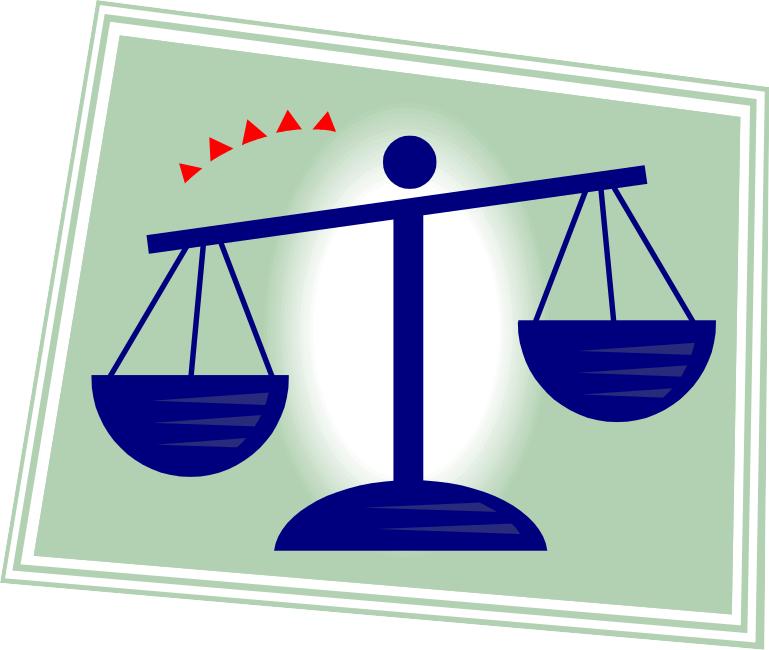
- •Нижегородский государственный лингвистический университет
- •Учебно-методические материалы
- •Contents
- •Unit I Public Relations in the Modern World Text 1
- •Word Study
- •Scanning
- •Public Relations Professional Text 2
- •Word Study
- •Scanning
- •The Public Relations Field Text 3
- •Education
- •Advocacy
- •Word Study
- •Scanning
- •Unit 4 e ssential Functions of Public Relations
- •Spokespersons
- •Communication Strategy
- •Subdivision of Public Relations
- •Financial Relations
- •Public Affairs
- •Internal Communications
- •Community Relations
- •Publicity and Marketing Communications
- •The Specialists
- •Word Study
- •Scanning
- •The Role of Research in Public Relations Text 5
- •Opinion Research
- •Word Study
- •Scanning
- •Unit 6 w orking with News Media Text 6
- •Print Media
- •Electronic Media
- •How to Reach the Media
- •Word Study
- •Scanning
- •Appendix 1
- •Declaration of Principles
- •Code of Professional Standards for the Practice of Public Relations
- •Analysis of the text
- •Appendix 2 The Ethical Foundations of Public Relations
- •Analysis of the text
- •Appendix 3
- •Eleven tips for a successful video news release
- •Appendix 4
- •Appendix 5 Principles of Effective Communication
- •Planning Your Presentation
- •Preparing Your Presentation Five easy steps
- •Making and using notes
- •The introduction
- •Report Writing Background
- •Связи с общественностью: профессиональный разговор учебно-методические материалы
Федеральное агентство по образованию
Государственное образовательное учреждение
высшего профессионального образования
Нижегородский государственный лингвистический университет
ИМ. Н. А. ДОБРОЛЮБОВА
СВЯЗИ С ОБЩЕСТВЕННОСТЬЮ:
ПРОФЕССИОНАЛЬНЫЙ РАЗГОВОР
Учебно-методические материалы
Нижний Новгород 2011
Печатается по решению редакционно-издательского совета ГОУ ВПО НГЛУ.
УДК 802.0:695.4 (075.83)
Связи с общественностью: профессиональный разговор: учебно-методические материалы. – Нижний Новгород: Нижегородский государственный лингвистический университет им. Н.А.Добролюбова, 2011. - 63 с.
Прелагаемые учебно-методические материалы, составленные по аутентичным публикациям, предназначены для обучения студентов основам профессиональной деятельности специалиста по связям с общественностью в контексте иноязычной культуры и языка.
Составитель: В.А. Калмыков, кандидат филологических наук, доцент
Рецензенты: : М.В.Цветкова, доктор филологических наук,профессор
И.В.Самойлова, кандидат филологических наук, доцент
© ГОУ ВПО НГЛУ, 2011
© Калмыков В.А., 2011
Contents
Unit 1. Public Relations in the Modern World |
4 |
Unit 2. The Public Relations Professional |
8 |
Unit 3. The Public Relations Field |
14 |
Unit 4. Essential Functions of Public Relations |
20 |
Unit 5. The Role of Research in Public Relations |
29 |
Unit 6. Working with the News Media |
34 |
|
|
Appendix 1 |
43 |
Appendix 2 |
47 |
Appendix 3 |
51 |
Appendix 4 |
52 |
Appendix 5 |
54 |
Unit I Public Relations in the Modern World Text 1

(Before reading the materials on the topic, try to think of the subject and share your opinion with your group-mates as to what public relations are, how you understand the idea of PR as a profession. Base your statement on what you have learnt about it from news media and your teachers. Get ready to compare your information with that of the text).
P![]() ublic
relations is a product of the 20th
century. As business, it had its origin in the first third of the
century. Its pioneers thought of themselves as in the business of
“publicity” or “corporate publicity”. Only later did the term
“public relations” come into general use. Whatever it was called,
the activity filled a need. It is only in the twentieth century that
public relations came to be codified, formalized, and practiced as a
profession. Actually, however, it is as old as the human race. Every
organization, institution, and individual has public relations
whether or not that fact is recognized. As long as there are people,
living together in communities, working together in organizations,
and forming a society, there will be an intricate web of
relationships among them.
ublic
relations is a product of the 20th
century. As business, it had its origin in the first third of the
century. Its pioneers thought of themselves as in the business of
“publicity” or “corporate publicity”. Only later did the term
“public relations” come into general use. Whatever it was called,
the activity filled a need. It is only in the twentieth century that
public relations came to be codified, formalized, and practiced as a
profession. Actually, however, it is as old as the human race. Every
organization, institution, and individual has public relations
whether or not that fact is recognized. As long as there are people,
living together in communities, working together in organizations,
and forming a society, there will be an intricate web of
relationships among them.
The good will of the public is the greatest asset that any organization can have. A public that is well and factually informed is not only important; without it, an organization cannot long survive. Therefore, the starting point for good public relations in any organization is the development of sound policies that are in the public interest. Public understanding and approval must be deserved before they can be earned.
Public relations is notoriously hard to define, perhaps because public relations is actually a composite of many different elements – research, media relations, product publicity, graphics, public affairs, and more. From that can be derived a broad but accurate definition of public relations as the use of information to influence public opinion. Public opinion is the ultimate power in a free society, and the role of public relations is to ensure that the public has the information it needs to make informed decisions. Management began to see that the public interest had to be considered when important decisions were made.
A company making such a commonplace decision as one to change the price of a product, for example, at one time would take into consideration only the costs of production, the prices of competing products, possible reactions within the trade, and legal considerations. But today, other factors must be taken into account – public and consumer attitudes, the possible reactions of labors and of government to the price change, and the reactions of the financial community.
Once the decision has been made, public relations skills are called into play to announce the change so that it is clearly understood by all the “publics” that will be affected by it. These skills will include expert writing, careful planning and scheduling, and consideration and care in serving the special needs of the news media through which the announcement will reach the public.
The comprehensive term “the public” may be used to denote different groups, rather than the entire populace. Therefore we speak of “publics” rather than of “the public”. From the point of view of business and industry, the major publics that need to be addressed include the following:
E
 mployees.
Good
public relations begins at home, and employees are part of the
business “family”.
mployees.
Good
public relations begins at home, and employees are part of the
business “family”.
S
 tockholders.
They
are the owners of the corporation – the “capitalists” whose
investments provide the funds with which corporations are founded,
maintained, and caused to grow.
tockholders.
They
are the owners of the corporation – the “capitalists” whose
investments provide the funds with which corporations are founded,
maintained, and caused to grow.
C
 ommunities.
The
area in which the corporations maintain
ommunities.
The
area in which the corporations maintain
offices, factories, or service facilities. The people of the community are the corporation’s neighbours, whose friendship, loyalty, and
support it needs.
 The
news media.
These
comprise all the means of public communication – print,
electronic, satellite, computer networks, and others that are
constantly being developed and restructured as technology continues
to improve and audiences become more segmented.
The
news media.
These
comprise all the means of public communication – print,
electronic, satellite, computer networks, and others that are
constantly being developed and restructured as technology continues
to improve and audiences become more segmented.
 Government.
At
all levels – federal, state, and local – government, as “the
voice of the people”, has the power to tax, regulate, and in one
way or another supervise the operations of corporations under its
jurisdiction.
Government.
At
all levels – federal, state, and local – government, as “the
voice of the people”, has the power to tax, regulate, and in one
way or another supervise the operations of corporations under its
jurisdiction.
The investment community. In particular, the people and institutions that analyze and evaluate the performance of corporations, and both invest themselves and make recommendations to others based on their findings.
Customers. The ultimate consumers of the corporation’s products, whose good opinion is vital to the continuing success and growth of the enterprise.
For any given enterprise this list of publics may be longer or shorter. For example, a corporation that sells its product only to other corporations is likely to have only a few customers, but one whose products include food or household supplies, for example, may have literally millions of them.
For organizations other than corporations, target publics will be defined differently, and will depend on the makeup, purposes, and goals of the organization.
Candidates for elective office and heads of government are perhaps the only persons for whom the public means everyone within their jurisdiction who is or may possibly become part of their constituencies.
Depending on the field of interest of a given institution, other audiences may be of paramount importance. These may be, for example, college-educated women, or ethnic groups, or teenagers, or a particular professional group such as doctors or lawyers.
Most organizations, upon launching a public relations effort, tend to concentrate first on those identifiable categories of people who are often referred to as “opinion leaders”. These are the people or groups who are admired by others, and who tend to be believed in. What they do, say, write or express opinions about actually forms public opinion. And often, the decisions they make are critical to the fortunes of the companies or other organizations that communicate with them.
